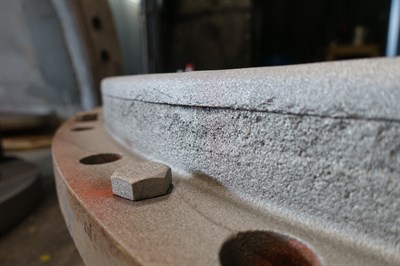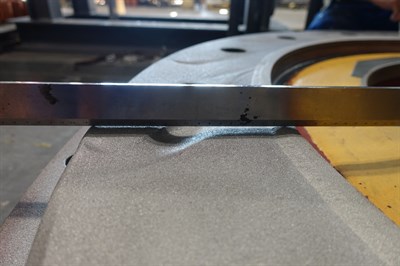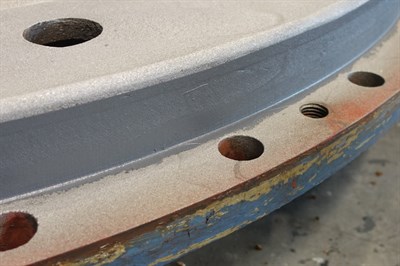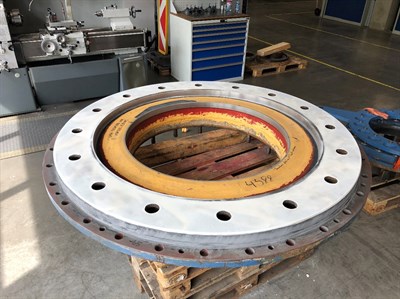Generator-side cover wear tackled with Belzona
Industry: Power (POWR)
Application: VPF-Valves, Pipes and Fittings (VPF)
Substrate: Steel
Customer Location: Austria
Application Date: April 2020
Products:
Belzona 1311 (Ceramic R-Metal)
Belzona 1331
Problem: The flat surface of the cover, where the turbine guide vanes are mounted, was very heavily worn. Additionally, the outer diameter of the cover had worn, becoming very uneven and losing up to 5cm of thickness.
Photograph Descriptions
1. Damaged edge after blasting
2. Damaged cover face after blasting
3. Edge repaired with Belzona 1331
4. Application completed and machined to fit
Application Situation
A steel cover at a hydropower station, which sits on the generator side of the turbine.
Application Method
The application was carried out in accordance with a modified version of Belzona Know-How System Leaflet VPF-1. The surface was prepared by grit blasting to a near white metal finish and a surface profile of 90 microns. The outer diameter of the cover was rebuilt using Belzona 1311 to create an even and concentric finish. The face of the cover was then coated with Belzona 1331 up to a thickness of 3mm. Finally, both the Belzona 1311 and Belzona 1331 were inspected, touch ups were applied to remove small air pockets, and the surface was machined to the required dimensions and finish.
Belzona Facts
Typical repairs to this equipment include filling localised damaged areas. However, in this instance, due to the extent of the metal loss, filling alone would not have been sufficient to level the entire surface, therefore the entire surface needed to be covered and machined back to tolerance. Using hot work methods such as welding over such a large are would have been excessively time consuming, and would have added heat stresses into large areas of the cover. For those reasons, it was decided to use Belzona materials, as they easily applied over larger areas with less labour, and do not induce heat stresses into the substrate. The application was carried out over a 4 day period, allowing for curing times, and comfortably back in service by the target date.



